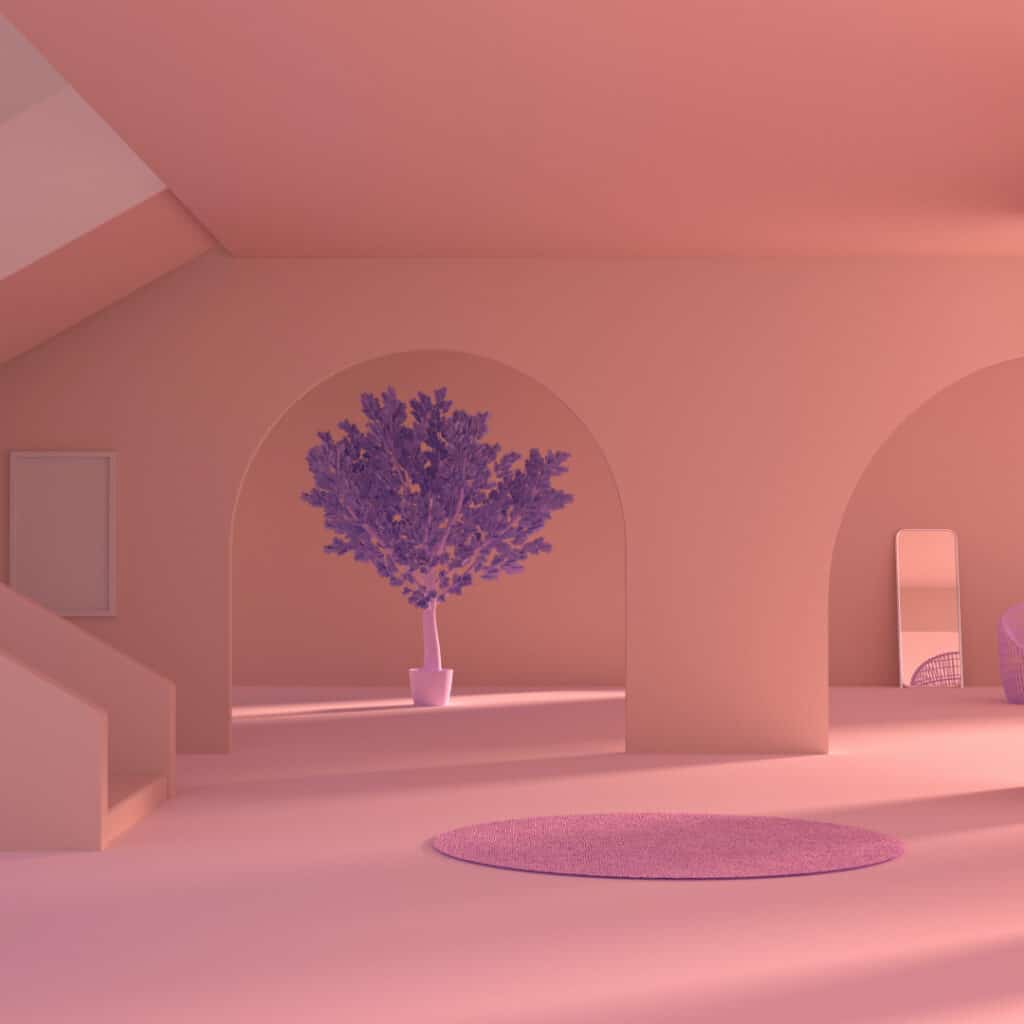An interior designer has many responsibilities, they must plan, research, coordinate, inspect, and communicate designs to name a few. Therefore, it’s no surprise that lots of designers are excited about emerging technology that has the potential to save time and energy. The power of artificial intelligence (AI) has become a disruptive technology in many industries, and the interior design sector is no exception. AI holds the power to enhance interior design processes, efficiency, and design, but does it exploit existing designers hard work and signature design styles?

What is AI?
Artificial intelligence design tools use machine learning algorithms to generate design ideas and layouts based on human inputs and prompts such as room size, budget, or style. A human will input prompts and the AI software will generate visual life-like renders sourced from online images or uploaded visuals. Examples of AI tools include Planner5D, Interior AI, and Midjourney. There’s no denying the appeal AI holds for designers, as it can quickly generate design concepts with different compositions styles, colours, and furniture. It is so powerful that sometimes it is impossible to identify AI sophisticated renderings between real-life designs!

AI game-changing benefits
There is no denying AI’s game-changing benefits. It helps interior designers to leverage data to create individualised, unique, and efficient spaces through personalised recommendations. Designers can enter preferences and receive multiple recommendations in seconds for furniture, textiles, and colours schemes. AI is also playing a big role in predictive trend analysis. It can dissect huge amounts of customer data to forecast future style and product trends that can help designers to shape their projects in line with customer demand.
Augmented reality (AR) and virtual reality (VR) are two other artificial intelligence pillars that really bring ideas to life. Designers can create virtual and augmented experiences for clients so they can explore 3D room mock-ups which will give designers real-time client feedback before actualising projects.
AI Potential Pitfalls
So, we’ve brushed upon AI’s benefits, but should interior designers be rushing to use AI?
Many of us already use AI in our everyday lives, take Siri or Alexa for example. We may even reluctantly admit that we’re unwittingly reliant on these “helpful” tools. If designers introduce more AI tools into their work, they run the risk of becoming over reliant on them. It takes time to develop creativity and design intuition and if you rely of AI to do this for you, you run the risk of stifling your creativity.
Whilst AI can generate thousands of unique designs in seconds, can any of them be truly original? Take Greg Rutkowski for example, he is an artist with a distinctive fantasy scene style. Yet, if you search his name, you’ll see plenty of images in his exact style that he never made. How can this be? You guessed it, AI. This “style copying” is still an ethical grey area as the images are original, but the design style isn’t. Many artists are choosing to boycott AI altogether. Amy Stelladia, a Spanish illustrator, spoke out publicly to complain about an AI app for using her artwork to generate portraits.
“They are meant to compete with our own work, using pieces and conscious decisions made by artists but purged from all that context and meaning,” Stelladia said. “It just feels wrong to use people’s life work without consent, to build something that can take work opportunities away.”

There’s no denying AI’s efficiency and productivity lure but everyone should be mindful of the impact AI could play on their creativity and future careers. Will you be using AI to help you with your interior design projects, or will you avoid it entirely?

